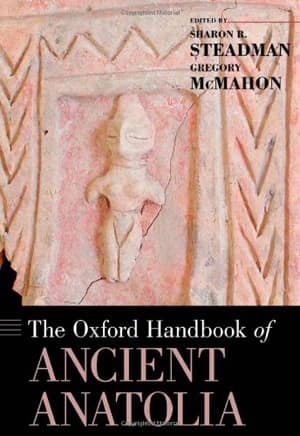1200 s, s/b resimler, sert kapak cilti, şömizli, İngilizce.
The Oxford Handbook of Ancient Anatolia is a unique blend of comprehensive overviews on archaeological, philological, linguistic, and historical issues at the forefront of Anatolian scholarship in the 21st century. Anatolia is home to early complex societies and great empires, and was the destination of many migrants, visitors, and invaders. The offerings in this volume bring this reality to life as the chapters unfold nearly ten thousand years (ca. 10,000-323 B.C.E.) of peoples, languages, and diverse cultures who lived in or traversed Anatolia over these millennia. The contributors combine descriptions of current scholarship on important discussion and debates in Anatolian studies with new and cutting edge research for future directions of study. The fifty-four chapters are presented in five separate sections that range in topic from chronological and geographical overviews to anthropologically based issues of culture contact and imperial structures, and from historical settings of entire millennia to crucial data from key sites across the region. The contributers to the volume represent the best scholars in the field from North America, Europe, Turkey, and Asia. The appearance of this volume offers the very latest collection of studies on the fascinating peninsula known as Anatolia.
Table of Contents
1. Introduction: The Handbook of Ancient Anatolia
PART I: The Archaeology of Anatolia: Background and Definitions
2. The Land and Peoples of Anatolia Through Ancient Eyes
3. A History of the Pre-Classical Archaeology of Anatolia
4. Anatolian Chronology and Terminology
PART II: Chronology and Geography
5. The Neolithic on the Plateau
6. The Neolithic in Southeastern Anatolia
7. The Chalcolithic on the Plateau
8. The Chalcolithic in Southeastern Anatolia
9. The Chalcolithic in Eastern Anatolia
The Early Bronze Age
10. The Early Bronze Age on the Plateau
11. The Early Bronze Age in Southeastern Anatolia
12. Eastern Anatolia in the Early Bronze Age
The Middle Bronze Age
13. The Southeastern and Eastern Anatolia in the Middle Bronze Age
The Late Bronze Age
14. The Late Bronze Age in the West and the Aegean
15. The Hittites on the Plateau
16. Southern and Southeastern Anatolia in the Late Bronze Age
The Iron Age
17. The Iron Age of Southeastern Anatolia
18. The Iron Age in Eastern Anatolia
19. The Greeks in Western Anatolia
PART III: Philological and Historical Topics
20. Luwian and the Luwians
21. Urartian and the Urartians
22. Phrygian and the Phrygians
23. A Political History of Hittite Anatolia
24. Anatolia:The First Millennium in Historical Context
25. Monuments and Memory: Architecture and Visual Culture in Ancient Anatolian History
PART IV: Thematic and Specific Topics
26. Eastern Thrace: The Contact Zone Between Anatolia and the Balkans
27. Anatolia and the Transcaucasus: Themes and Variations ca. 6400-1500 BCE
28. Indo-European and Indo-Europeans in Anatolia
29. Troy in Regional and International Context
30. Assyrians and Urartians
31. The Greeks in Anatolia: From the Migrations to Alexander
From Pastoralists to Empires: Critical Issues
32. The Halaf Tradition
33. Millennia in the Middle? Reconsidering the Chalcolithic of Asia Minor
34. Interaction of Uruk and Northern Late Chalcolithic Societies in Anatolia
35. Ancient Landscapes in Southeastern Anatolia
36. Metals and Metallurgy
37. The Hittite State and Empire from Archaeological Evidence
38. The Hittite Empire from Textual Evidence
PART V: Key Sites
39. Catal Hoyuk: A Prehistoric Settlement on the Konya Plain
40. Arslantepe-Malatya: A Prehistoric and Early Historic Center in Eastern Anatolia
41. Kultepe-Kane : A Second Millennium Trading Center on the Central Plateau
42. Key Sites of the Hittite Empire
43. Ayanis: An Iron Age Site in the East
44. Gordion: The Changing Political and Economic Roles of a First Millennium City
45. Kaman-Kalehoyuk: A Bronze and Iron Age Site on the Anatolian Plateau
46. Sardis: A First Millennium Capital in Western Anatolia




